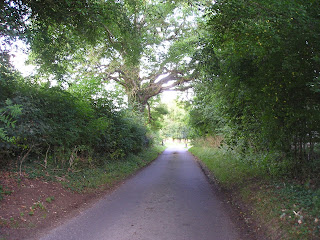Casino Marino
Gambling isn’t one of my vices and so when it was suggested
that a visit to the Casino at Marino was a ‘must’ when staying in Dublin, I
really wasn’t that keen. Grudgingly I
agreed little realising what a treat was to be in store for me. The Casino was completed in 1775 and just like
gambling dens its purpose was to entertain, impress and amuse its guests - but
on a very different level.
How to find the Casino Marino

When James Caulfeild, Ist Earl of Charlemont completed a
nine year Grand Tour of Italy, Greece, Turkey and Egypt he brought back to
Ireland a great hoard of treasures. He
also returned with a loveand deep knowledge of the classics and he used this to
create a grand neo-classical building to house them. Neither a folly nor a house to be lived in
(the main dwelling, Marino House, half a mile away and linked by a tunnel, was
demolished in the 1920’s) the Casino was built purely to show off his
collections. Caulfeild employed Sir
William Chambers as the architect who, busy with Royal clients in London, never
visited the site before, during or after completion; most of the work was
carried out by the stonemason and sculptor Simon Vierpyl. Chambers was, however, reputed to be immensely
proud of his work and justly so.
Everything about Casino Marino was designed to impress and
it still does albeit that the contents of the building have long been lost. It stands alone and, nowadays, rather out of
context for its landscape of far reaching sea views and open countryside are
hidden by the city. It was also built to
deceive and it still does this too: what appears to be a square, single storey
building is actually one built on a cross over three floors. The huge oak doors are also a deceit for they
open to reveal a small entrance, the remainder hidden from the inside by ornate
plasterwork. The blacked out single
windows are neither of these things for
the glass has been bevelled to reflect light making it difficult to see in from
outside yet flooding not one but three or more rooms with natural light. The urns sitting high above the pediments
are, in fact, cunningly disguised chimneys.
Four of the solid looking columns are hollow and channel rainwater from
the roof.
The building of the Casino (its name derives from the
Italian meaning ‘little house’) was all consuming both in effort and money and
the building very quickly fell into disrepair, its art sold to settle
debt. By the 1930’s the building was in
danger of collapse. Now carefully
restored it is possile to explore its sixteen rooms, some of which are reached
by ‘secret’ doors. Some of the original
parquet wooden flooring survives and one small room has a delightful alcove,
its wallpaper still looking fresh.
Interestingly, the printing technology of the time prevented continuous
rolls being produced and it is possible to see the joints where several large
sheets of paper were hung.
Casino Marino is open from March to October. A very knowledgable guide escorts you around
the building bringing it back to life with information sprinkled with more than
a touch of Irish humour. It is well
worth making a special trip to see this very rare example of neo-classical architecture,
considered to be the finest in Ireland and just one of three such buildings in
Europe.
How to find the Casino Marino
+++copyright.jpg)

+++copyright.jpg)




Comments
Post a Comment